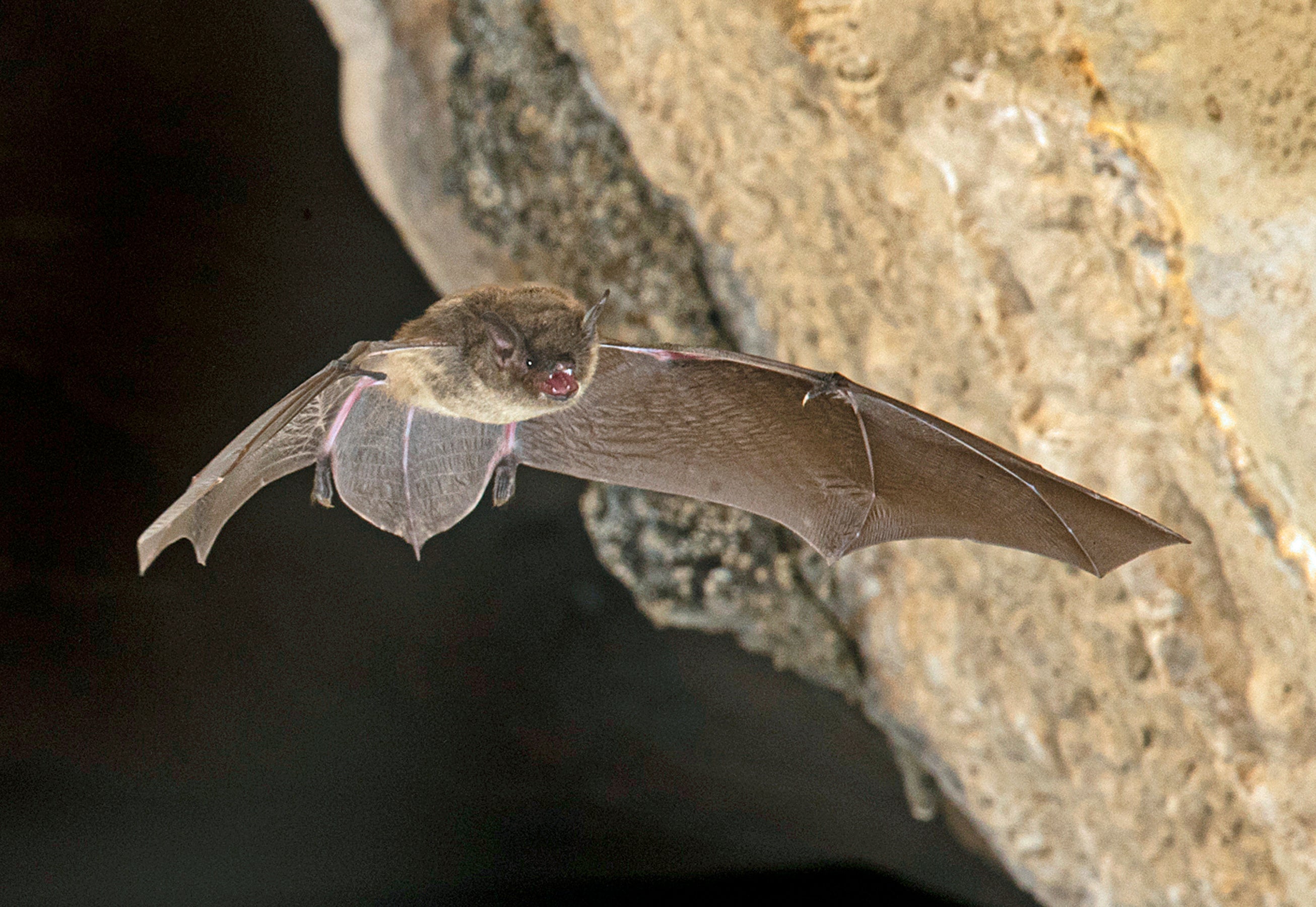By DAVID RAINER, Alabama Department of Conservation and Natural Resources
Important bat habitat in north Alabama has recently been protected in what Nick Sharp of the Alabama Wildlife and Freshwater Fisheries (WFF) Division considers possibly the highlight of his career as the Division’s bat expert.
Steel gates have been installed on Weaver Cave in Anniston to protect the extensive underground caverns as important bat habitat.
“Someone brought my attention to a YouTube video of bats coming out of the cave that was shot about six years ago by a local caver,” Sharp said. “When I saw it, I thought they must be gray bats. I started doing some investigating – catching bats coming out and counting bats coming out. We did some inside the cave surveys. It became apparent pretty quickly it was an important gray bat cave. Subsequently, we recognized it’s important for the tricolored bats as well.”
Gray bats are on the Endangered Species List and tricolored bats are under review to determine if listing as endangered or threatened is justified. Another endangered species, the Indiana bat, may also use the cave at times although more research is needed to verify its presence.
Sharp said Weaver Cave has a long history of human use. It was mined by the Confederacy for saltpeter during the Civil War. The mineral used to make gunpowder was loaded on the Selma, Dalton, and Rome Railroad less than a quarter mile from the cave and shipped to the furnaces in Oxford and Rome, Georgia. That railroad line is now the Chief Ladiga Trail.
Before and after the war, the cave was reportedly used for different social activities, like dances and parties. After lighting was installed in the cave in the early 1900s, it became a popular destination for picnicking, school field trips, and Sunday school outings.
Sharp said gray bats, northern long-eared bats, and tricolored bats were documented in the cave as early as 1959. Because gray bats are extremely sensitive to human disturbance in their caves, the bat populations crashed through the early to mid-1900s. The species was listed as Endangered in 1976. The cave is now home to about 10,000 gray bats in summer. About 600 tricolored bats use the cave in winter, making it an important hibernaculum for this at-risk species.
When the Georgia-Alabama Land Trust acquired the cave in 2020, WFF contacted the Trust about protecting the bat habitat with the use of steel gates to prevent people from entering.
With funding provided by the U.S. Fish and Wildlife Service and the Natural Resources Conservation Service, the gates were constructed and installed by Kennedy Above-Underground.
“These are called bat-friendly gates,” Sharp said. “A lot of investigation and thought was put into the design of these gates. They don’t restrict air flow at all. The main entrance to Weaver is the one where almost all of the bats come in and out. The bats always come out near the top so that was left open to give them enough room so they could flow out and the bats do not get backed up behind it.
“We’re grateful to all the partners that made this rare conservation success possible,” Sharp said.








